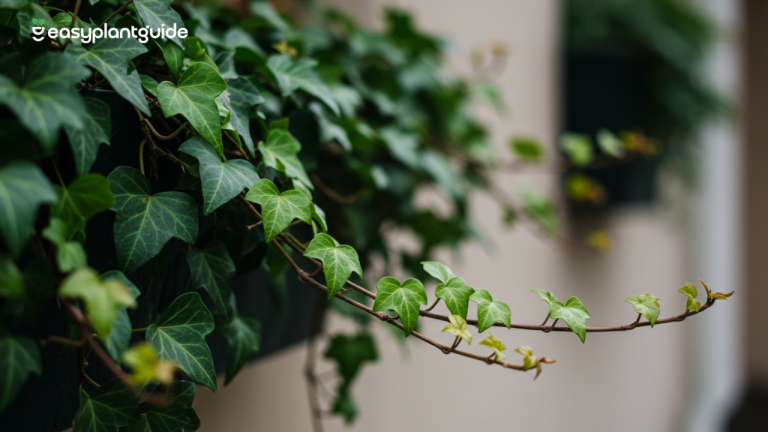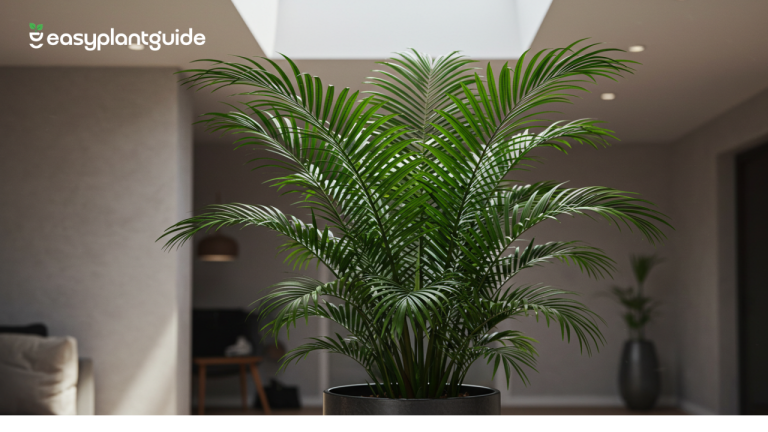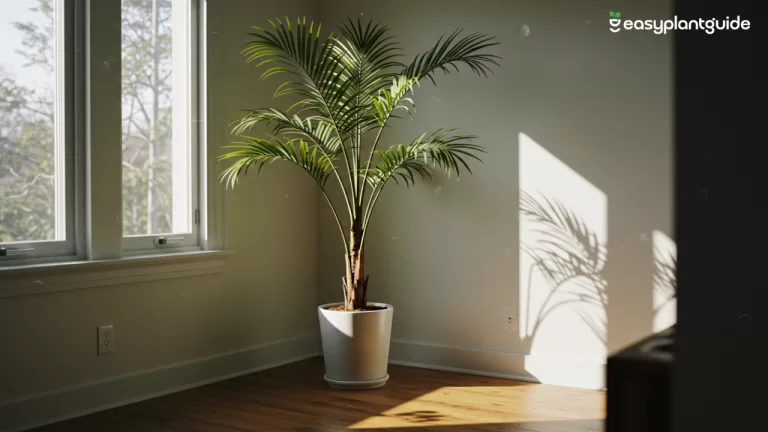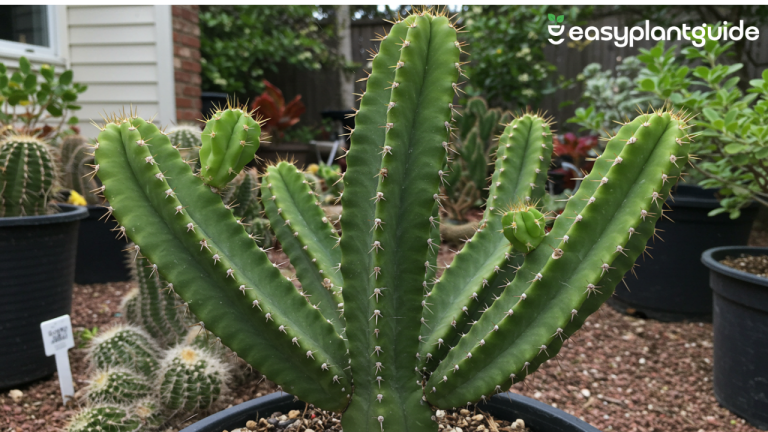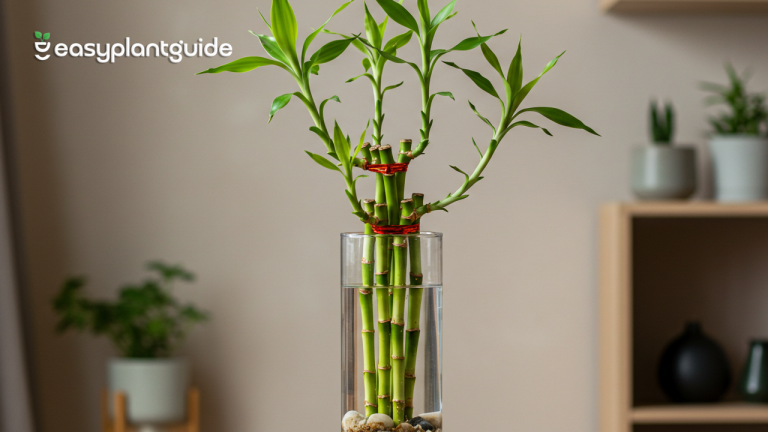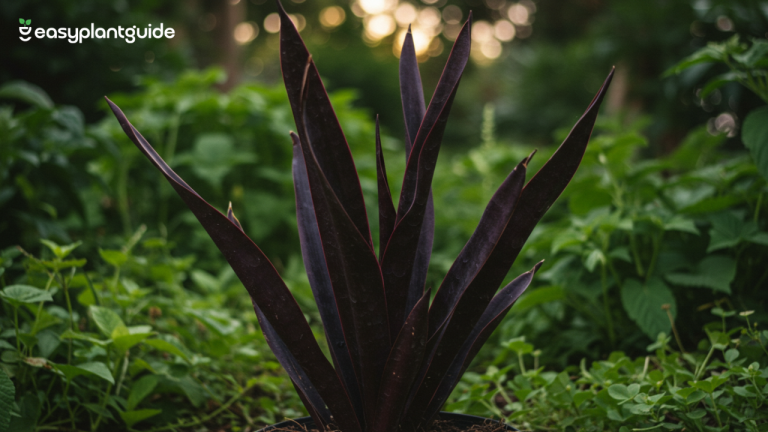Bucket Gardening: 10 Proven Secrets for Effortless Bliss
Bucket gardening is the perfect solution for anyone who dreams of growing fresh veggies, herbs, and flowers — even with limited space. Whether you live in a tiny apartment, have a small balcony, or just want a low-maintenance way to start gardening, this method works wonders.
Imagine transforming simple household buckets into lush mini gardens bursting with life. Sounds amazing, right? Let’s explore how you can turn a few old buckets into your very own green paradise with these 10 proven secrets for successful bucket gardening.
What Is Bucket Gardening?
Bucket gardening is a simple and flexible form of container gardening where plants are grown in buckets instead of traditional soil beds. You can use plastic, metal, or recycled buckets to cultivate herbs, vegetables, or flowers with ease. It’s affordable, eco-friendly, and perfect for beginners or those with limited space.
Bucket gardening also gives you full control over sunlight, soil, and watering conditions. You can easily move the buckets to ensure your plants get the right amount of light throughout the day. This portable gardening method makes growing plants convenient, efficient, and enjoyable.
Why Choose Bucket Gardening?
There are plenty of reasons to choose bucket gardening, especially if you live in a small apartment or urban area. It saves valuable space while letting you grow a variety of plants in limited areas like balconies or patios. Plus, it’s an affordable and eco-friendly way to reuse old buckets instead of buying expensive planters.
With bucket gardening, you also get better control over pests, diseases, and soil quality. The buckets are portable, allowing you to move plants easily for sunlight or shade as needed. This makes it a perfect choice for beginners and busy gardeners who want low-maintenance greenery.
Best Buckets for Gardening
Choosing the right bucket can make a big difference in your garden’s success. Check this quick guide:
| Type of Bucket | Material | Ideal For | Durability |
|---|---|---|---|
| Plastic Buckets | Lightweight, easy to handle | Vegetables, herbs | High |
| Metal Buckets | Sturdy, rustic look | Decorative plants | Medium |
| Paint Buckets | Recyclable, free | General planting | Medium |
| Food-grade Buckets | Non-toxic and safe | Edible crops | Very High |
| Wooden Buckets | Stylish and natural | Flowers | Medium |
How to Start a Bucket Garden
Starting your own bucket garden is simple, affordable, and rewarding. You don’t need a big backyard or fancy tools — just a few buckets, good soil, and a bit of patience. Follow these steps to begin your small-space gardening journey:
- Choose a 5-gallon bucket for most plants: This size is perfect for vegetables like tomatoes, peppers, and herbs. Make sure the bucket is clean and preferably food-grade to avoid harmful chemicals.
- Drill 4–6 holes at the bottom for drainage: Proper drainage is essential to prevent root rot. Use a drill or heated metal rod to make evenly spaced holes, allowing excess water to escape easily.
- Add small pebbles or stones to improve airflow: A 1–2 inch layer of pebbles at the bottom helps air reach the roots and keeps soil from clogging the drainage holes. This step ensures healthier root development.
- Fill with high-quality potting mix: Avoid using garden soil since it can be heavy and compact in buckets. Instead, use a mix of potting soil, compost, and perlite for ideal aeration and nutrition.
- Plant your seeds or seedlings and water gently: Make small holes in the soil, insert seeds or young plants, and cover lightly. Water until the soil is moist (not soggy), and place your bucket in a sunny spot.
5 Best Plants to Grow in Buckets
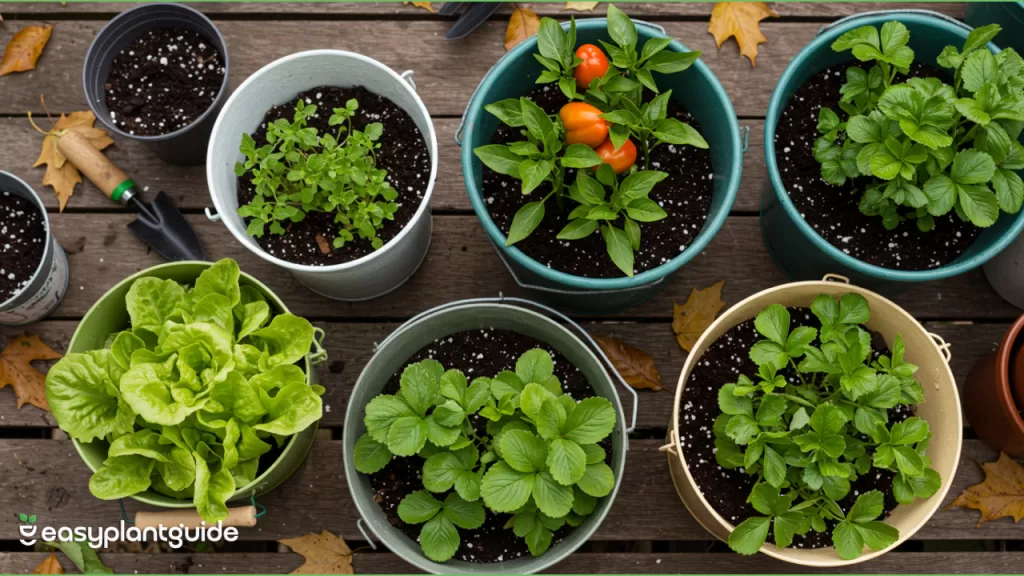
When it comes to bucket gardening, some plants adapt better to small spaces and limited soil depth than others. If you’re just starting out, these easy-to-grow options will give you quick success and beautiful results:
- Tomatoes – Deep roots, big yields: Tomatoes are one of the most popular choices for bucket gardening. They thrive in 5-gallon buckets with plenty of sunlight and regular watering. Add a support stake or cage to help them grow upright and produce juicy, abundant fruits.
- Peppers – Compact and colorful: Peppers, both sweet and hot varieties, love the warmth and grow well in buckets. Their compact size makes them perfect for patios or balconies. With the right care, they’ll reward you with vibrant, flavorful harvests all season long.
- Lettuce – Quick-growing and forgiving: Lettuce is ideal for beginners because it grows fast and doesn’t need deep soil. You can plant multiple varieties in one bucket and harvest leaves continuously. Keep it in partial shade to prevent the leaves from becoming bitter.
- Herbs – Basil, mint, and parsley thrive in small containers: Herbs are perfect for bucket garden:ing since they require minimal space and maintenance. A few buckets can give you a steady supply of fresh, aromatic herbs for cooking and tea. Just make sure mint has its own bucket—it spreads quickly!
- Strawberries – Sweet, low-maintenance favorites: Strawberries not only look beautiful but also produce delicious fruit in buckets. They prefer well-draining soil and full sunlight. Hanging or tiered bucket setups work great for them, keeping the berries clean and easy to pick.
Choosing the Right Soil Mix
Good soil is the foundation of every thriving bucket garden. Since buckets offer limited space, the right mix ensures plants get the nutrients, aeration, and drainage they need to grow strong. Avoid using regular garden soil — it’s too dense and can compact easily, suffocating the roots. Instead, focus on creating a light and nutrient-rich blend that encourages steady growth and prevents waterlogging, which is a common issue in containers.
A well-balanced bucket gardening soil mix includes 40% potting soil for structure, 30% compost for natural nutrients, 20% coco peat or peat moss for moisture retention, and 10% perlite or sand for better drainage. This mix strikes the perfect balance between holding water and allowing airflow, helping roots stay healthy and active. With the right soil blend, your bucket garden will remain vibrant, productive, and full of life throughout the growing season.
Benefits of Bucket Gardening
Still wondering if bucket gardening is really worth it? You’ll be surprised at how many benefits this simple method brings — from saving money to improving your mood. Let’s explore why more people are switching to this easy, eco-friendly gardening style.
1. Super Affordable and Eco-Friendly
One of the best things about bucket gardening is that it’s incredibly budget-friendly. You can reuse old paint buckets, containers, or even recycled tubs — reducing waste while saving money. Instead of investing in large garden setups, all you need is good soil, seeds, and sunlight. It’s an excellent way to practice sustainability without breaking the bank.
2. Ideal for Urban Dwellers
If you live in an apartment or have limited space, bucket gardening is your perfect green solution. Buckets fit easily on balconies, rooftops, or small patios, making it possible to enjoy homegrown herbs, vegetables, and flowers even in tight spaces. It brings nature closer to your everyday life, no matter where you live.
3. Reduces Stress and Boosts Happiness
Gardening is known to calm the mind, and bucket gardening is no exception. Tending to plants, watching them grow, and spending time outdoors can lower stress and improve your mood. It gives you a sense of accomplishment and helps you disconnect from daily worries while reconnecting with nature.
4. Easier to Maintain Than Traditional Gardens
Unlike large garden beds that require constant weeding, digging, and heavy watering, bucket gardening is much easier to maintain. You can easily move the buckets for better sunlight or protect them from harsh weather. Plus, controlling pests, diseases, and watering is simpler in a contained space.
5. Perfect for Kids and Beginners
For children and gardening newbies, bucket gardening is a fun and educational way to learn the basics of plant care. It teaches responsibility, patience, and the joy of growing something with your own hands. Since it’s compact and manageable, beginners can experiment freely without feeling overwhelmed.
DIY Bucket Garden Ideas
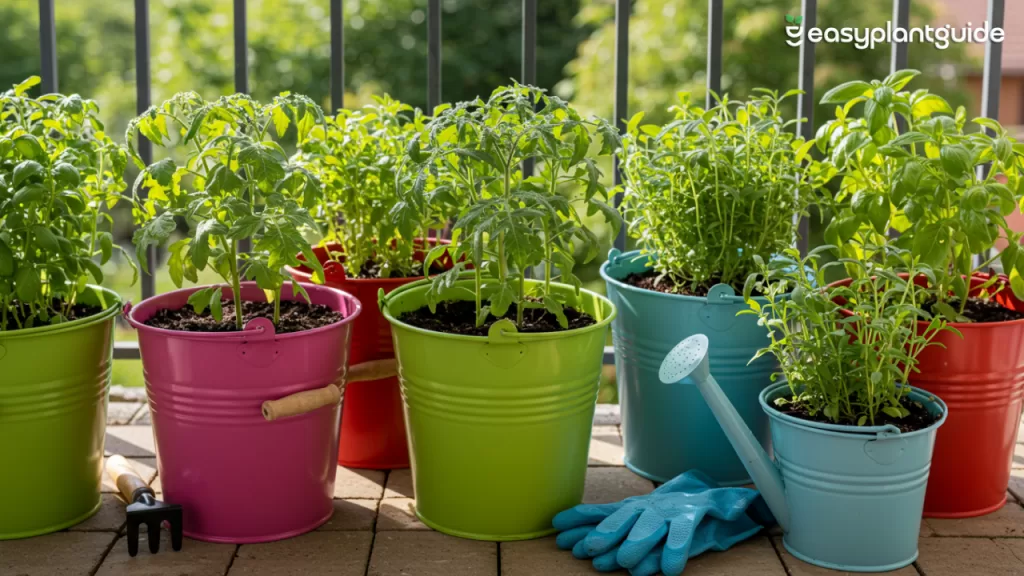
Why settle for plain buckets when you can get creative? Here are some fun design ideas:
- Paint buckets in bright pastel colors.
- Hang small buckets for vertical gardens.
- Stack them for a tiered effect.
- Use chalkboard paint to label each plant.
- Recycle old containers for a rustic charm.
5 Common Bucket Gardening Mistakes to Avoid
Even the most enthusiastic gardeners make a few mistakes when starting out with bucket gardening, but the good news is — you can avoid them easily. By understanding what not to do, you’ll save time, prevent plant stress, and enjoy healthier, more productive growth. Let’s look at the most common slip-ups and how to fix them.
1. Skipping Drainage Holes
One of the biggest mistakes in bucket gardening is forgetting to drill holes at the bottom. Without proper drainage, water accumulates, leading to soggy soil and root rot. Always drill 4–6 holes at the base of each bucket to let excess water escape. You can also add a layer of pebbles or gravel to improve airflow and drainage.
2. Using Heavy or Clay Soil
Regular garden soil might seem fine, but it’s too dense for bucket gardening. It compacts easily, blocks air, and holds too much moisture. Instead, use a light, well-draining mix with potting soil, compost, and perlite or coco peat. This keeps roots healthy and encourages steady growth.
3. Planting Too Many Seeds in One Bucket
It’s tempting to grow more plants in one container, but overcrowding leads to poor growth and nutrient competition. Each plant in your bucket garden needs space to spread its roots and access sunlight. Always check spacing guidelines for each plant type before sowing.
4. Overwatering Plants
Beginners often assume more water means healthier plants — but in bucket gardening, that’s a recipe for trouble. Overwatering suffocates roots and causes fungal issues. Water only when the top inch of soil feels dry, and ensure good drainage to prevent buildup.
5. Ignoring Sunlight and Weather Conditions
Every plant has its own sunlight needs, and neglecting them can stunt growth. Place your bucket garden where it gets at least 6 hours of sunlight per day. During hot spells, move buckets to shaded areas or use mulch to retain moisture.
Conclusion
Bucket gardening proves that you don’t need acres of land or fancy tools to grow your own food. It’s all about creativity, care, and a connection with nature. Turning simple buckets into mini gardens lets you reuse what you already have and enjoy the beauty of growing something from scratch. Each repurposed bucket, whether it holds herbs, flowers, or vegetables, brings you one step closer to a sustainable and mindful lifestyle.
So, grab a bucket, fill it with rich soil, and begin your bucket gardening journey today. Watch your plants grow, feel the joy of nurturing life, and let every leaf remind you that even small spaces can bloom beautifully. Your hands might get dirty, but your soul will surely bloom along with your garden.
Explore more plant blogs and grow your green journey with us.


